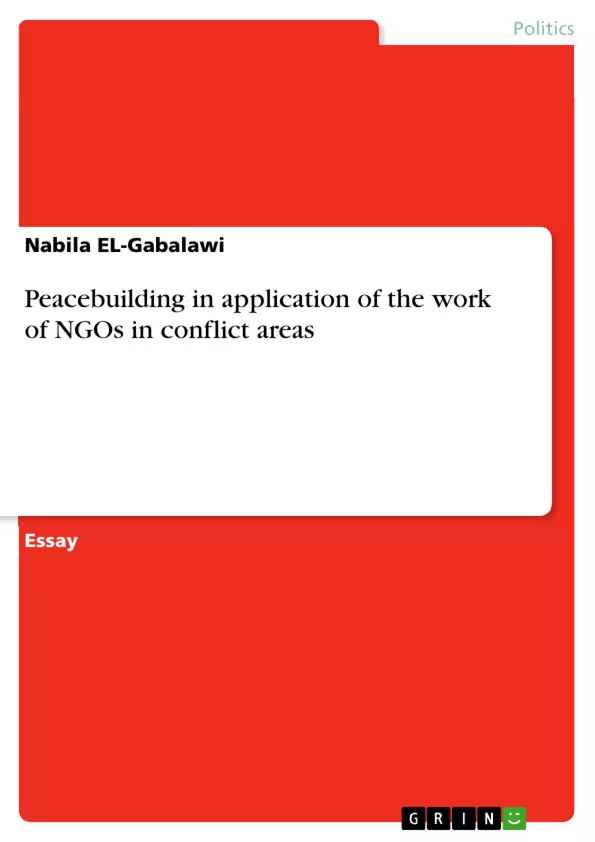This paper illustrates the meaning of peacebuilding as a comprehensive sustainable process that aims at resolving the conflicts, which spread widely in the post Cold War era within different nations and among them. Peacebuilding as a sustainable process requires the intervention of different actors at the local, national and international levels and requires the cooperation between them to coordinate their roles in the post conflict situation. This paper also discusses specifically the role of NGOs as one of these important actors in the international community and the different actions that carried out by them that help in providing a healthy environment for sustaining peace and development at the same time. However, linking peace with aid by NGOs in most of the cases added more damage in the targeted post conflict countries instead of depleting it. Discussed within are the challenges that have been met by different NGOs at different levels when trying to incorporate peacebuilding into development and while intervening in the field.
Inhaltsverzeichnis (Table of Contents)
- Introduction
- Background
- Comprehending peacebuilding
Zielsetzung und Themenschwerpunkte (Objectives and Key Themes)
This paper explores the concept of peacebuilding as a comprehensive, sustainable process aimed at resolving conflicts prevalent in the post-Cold War era. It delves into the role of NGOs as key actors in the international community and the challenges they face in integrating peacebuilding into development work.
- Peacebuilding as a comprehensive and sustainable process
- The role of NGOs in peacebuilding
- The challenges of integrating conflict sensitivity into development work
- The importance of cooperation among actors at different levels
- The need for sustainable and equitable peacebuilding initiatives
Zusammenfassung der Kapitel (Chapter Summaries)
- Introduction: This section introduces the concept of peacebuilding as a comprehensive and sustainable process that aims to resolve conflicts, particularly in the post-Cold War era. It highlights the importance of NGOs as actors in the international community and their role in peacebuilding.
- Background: This chapter explores the rise of intra-state conflicts in the post-Cold War era and the devastating consequences they have on societies. It discusses the motivations behind NGO interventions in conflict zones, emphasizing their role in providing humanitarian assistance and contributing to peacebuilding efforts.
- Comprehending peacebuilding: This section defines peacebuilding as a multi-faceted process that involves building structures, institutions, and capacities to achieve sustainable development. It examines different approaches and stages involved in peacebuilding, emphasizing the importance of local participation, coordination among actors, and healing relationships affected by violence.
Schlüsselwörter (Keywords)
Key terms and concepts explored in this text include: peacebuilding, conflict sensitivity, NGOs, sustainable development, post-Cold War conflicts, intra-state conflicts, humanitarian assistance, conflict resolution, governance, human rights, participation, cooperation, and positive peace.
- Quote paper
- Nabila EL-Gabalawi (Author), 2008, Peacebuilding in application of the work of NGOs in conflict areas, Munich, GRIN Verlag, https://www.grin.com/document/156539



